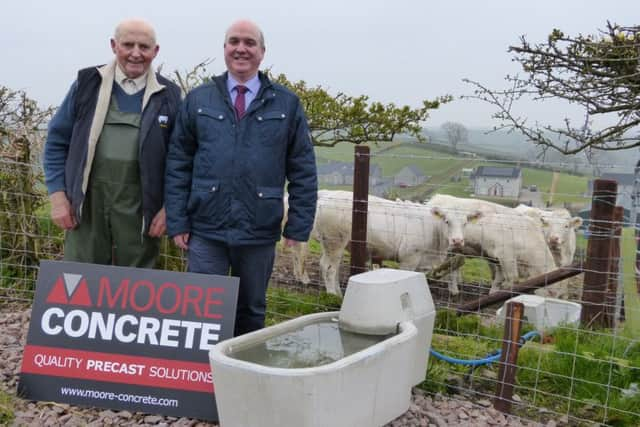Charolais the catalyst for efficiency


With this considered it is of vital importance that producers strive to become more efficient and ultimately more profitable in a changing uncertain world, it is clear certain factors are now taking a greater influence on the type of breeding stock they are buying.
Taking the pillars of livestock production discussed below into consideration and combined with modern Charolais genetics the breed provides an efficiency to overcome some of the hurdles being experienced within our current beef industry in both the short and long term in order to help maximise dwindling profits.
Advertisement
Hide AdAdvertisement
Hide AdThe three pillars of livestock performance: Genetics, Nutrition, Management


Looking forward, the recurrent theme which seems to come through in all scenarios seems to be a drive towards greater technical efficiency. Whether it is from a reduction in post–Brexit support, reductions in tariffs which help restrict beef imports to the UK or long-term global demand for nutrients, all roads appear to lead to the conclusion that we need to ‘maximise outputs from given inputs.
Genetics: Starting at the beginning of the supply chain the single most important factor that determines the profitability of the whole herd, is using the best available genetics.
With less labour and time available breeders are striving towards shorter calving periods and aiming towards more consistency in batch sizes at weaning. Responding to the requirements of the finisher, the aim is to achieve less days to market and more weight off farm at a younger age. With supply chains in many cases becoming more integrated, and with performance data being more readily available, the focus on genetics is going to be stronger than ever. And with farms becoming larger, understanding the role of genetics in whole-chain efficiency will become paramount.
Advertisement
Hide AdAdvertisement
Hide AdNutrition: It is absolutely clear that nutrition is key to achieving the potential of genetics. Exciting new science is demonstrating the opportunity to change the way genes are expressed through nutrition, and that this might even be possible before conception! There is clear opportunity for further useful research to be carried out in this area but we should be aware of the scope to improve current efficiency through improved feeding. One of the most striking recent examples has been the improved output of heifers by applying the correct balance of protein and starch at a young age. This has led to significant extra output and value from increased carcass weight.
In the past few years Harbro have worked with producers to improve health through nutrition and as a result have developed a clear message of getting the rumen right is fundamental to overall health.
Management: The finishing landscape is changing. The pressures being placed on processors for a more efficient supply of uniform, quality product is resulting in much closer collaborations between the large finishers and abattoirs. With a greater focus on a more consistent supply of the appropriate animals, finishers themselves are looking to source more of the ideal animals for their system. These changes will inevitably drive a new focus on management which is likely to lead to more streamlined systems relying on detailed production data.
The beef industry may have much to learn in this regard from the unsubsidised pig and poultry industries which have driven output and efficiency in a large part through tackling variation in production. Eliminating the loss from ‘bottom-third’ performers is possibly the quickest way towards improving efficiency and profitability, and this is where many in the beef industry are focusing their attention. The reality is that much of this variation can be tackled even before bulling by planning for a tight calving pattern.
Advertisement
Hide AdAdvertisement
Hide AdA more consistent group of calves makes management so much easier, and translates to an easier managed breeding herd as replacements come through.
In order to avail of the benefits, the Charolais breed provides to continuing herd developments the NI Charolais club remaining spring sales are in Dungannon Farmers Mart on Monday, May 6 kindly sponsored by Moore Concrete where 24 bulls and five females have been entered with a variety of stock to suit any producer on the day, with the final spring sale the NCCE Swatragh on Friday, May 31 - see associated adverts.